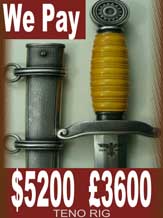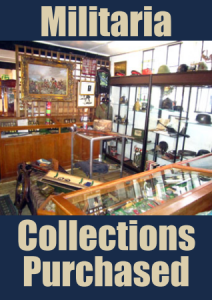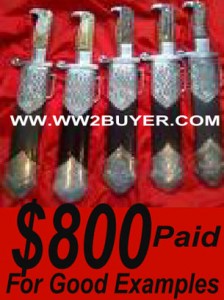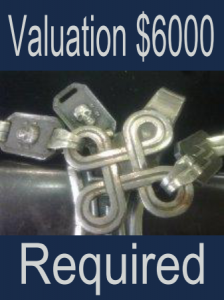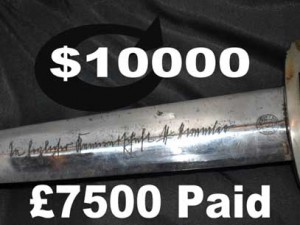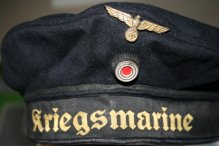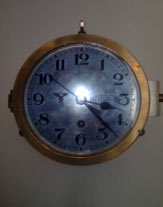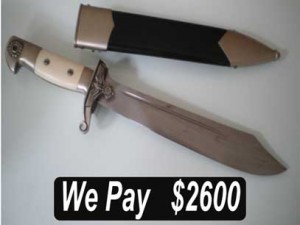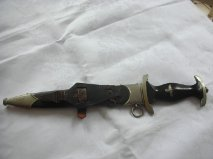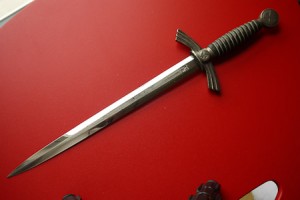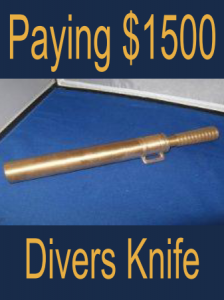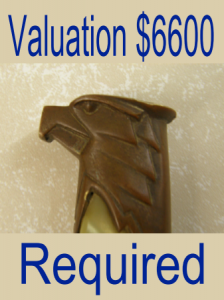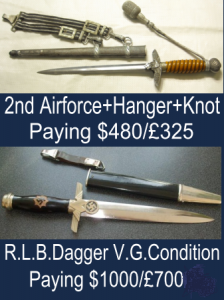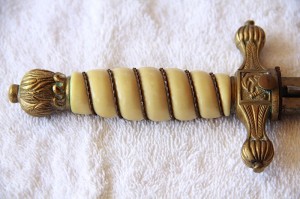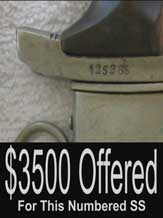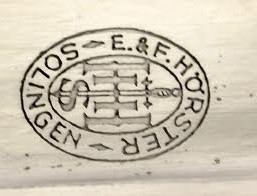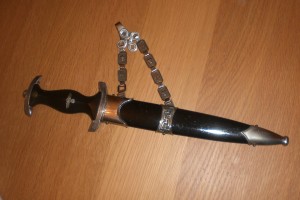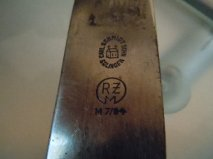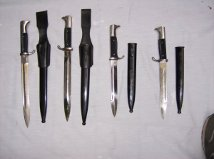German Motor Sport Award Stickpin , Nazi Women’s League Membership Badge, A Polish Auschwitz Cross, Norway. A Merit Cross with Swords, Quisling issue, Type II, C.1942 , A German State Soldier’s Association Marksmanship Award , A Signature of SS Panzer Commander , , Two Czech Second War Liberation Table Medals ,Yugoslavia, Republic. A Rare Corpus of National Defence Buckle, Badge & Photograph,,A Wartime Signed Kreigsmarine Knight’s , A Saxon Steel Helmet, League of Frontline Soldiers Tenth Anniversary Plate, A Mint Hauptsturmführer Collar,Generalfeldmarschall Werner von Blomberg ,A Bavarian Reichsnährstand (RNST) Medal for Twenty Years’ Faithful Service, A German League of the Reich for Physical Exercise (DRL) Silver Sports , A Set of SS-Sicherheitsdienst Sturmmann Shoulder Boards Sold , A Second War German Veterans Gorget with Armband in Box of Issue,
FREE RESEARCHED VALUATIONS
To obtain free valuations simply
complete the form provided
in the next column.
Or call for U.S.A (00447860747027)
U.K (07860747027)
To Email
davidmatteybuyer ← join these together to make our email address →
@gmail.com
Welcome
Part of our own Museum style display a tourist attraction enjoyed by thousands of visitors .

BEFORE YOU SELL TO DEALERS ON-LINE INSIST ON PRE PAYMENT GET SEVERAL OPINIONS DO NOT SHIP ITEMS UNTIL THE CASH IS SHOWN IN YOUR PAYPAL ACCOUNT

Manufacturer Deutsche Waffen und Munitionsfabriken, Imperial Arsenals of Erfurt and Spandau, Simson, Krieghoff, Mauser, Vickers Ltd, Waffenfabrik Bern
Unit cost $13 or 32 RM
Produced 1900–1945
Specifications
Weight 871 grams (1.92 lbs)
Length 222 mm (8.74″)
Barrel length 95–200 mm
(3.74–7.87″)
Cartridge 7.65×21mm Parabellum
9×19mm Parabellum
.45 ACP (rare)
Action Toggle-locked, short recoil
Rate of fire Semi-automatic
Muzzle velocity 350–400 m/s (1148–1312 f/s; 9mm, 100 mm barrel)
Effective range 50 m (9mm, 100 mm barrel; short barrel)
Feed system 8-round detachable box magazine, 32-round detachable drum
Sights Iron sights
The Pistole Parabellum 1908 or Parabellum-Pistole (Pistol Parabellum)—popularly,[1] but incorrectly, known as the Luger—is a toggle-locked recoil-operated semi-automatic pistol. The design was patented by Georg J. Luger in 1898 and produced by German arms manufacturer Deutsche Waffen- und Munitionsfabriken (DWM) starting in 1900; it was an evolution of the 1893 Hugo Borchardt designed C-93. The first Parabellum pistol was adopted by the Swiss army in May 1900. In German Army service, it was succeeded and partly replaced by the Walther P38 in caliber 9mm Parabellum.
The Luger is well known from its use by Germans during World War I and World War II, along with the interwar Weimar Republic and the post war East German Volkspolizei. Although the P.08 was introduced in 7.65mm Parabellum, it is notable for being the pistol for which the 9mmP (also incorrectly known as the 9mm Luger) cartridge was developed.
Third Reich and imperial German dagger prices are governed by rarity, condition and interest in the particular service who carried them.
Countless combinations of makers and patterns make this an interesting area for the academic collecting community.
Broadly speaking the earlier pre war examples were fashioned from better raw materials therefor they command higher prices.
The declining quality of materials was as a result of the demands of Germany’s armaments drive. In both World wars ferrous metals replaced copper alloys on fittings.
The SA dagger is the most frequently encountered, these are closely followed by the Army,Navy,and the 1937 pattern Luftwaffe daggers.
Scarcer examples include the Second Pattern Railway dagger and the TENO daggers and imperial motor corps.
German Air Protection Federation [Reichsluftschutzbund (RLB)]
|
In 1923 The Reichs Air Ministry the RLB evolved from the existing Deutches Luftschutzverband German Air Protection League. Hermann Goring declared that the RLB was to be the official air raid protection service of the Reich.The role of the RLB was to protect the cities and population from hostile attacks.This section trained the civilian population in civil defense matters and air raid precautions. With the exception of a small cadre of career officers, the remainder of the force was composed of volunteers similar to the Civil Defense Corps.The RLB was subdivided into two formations:1)… the Luftschutz (Air Raid Protection)2)… the Warndienst (Air Raid Warning Service). After 1943, the Warndiest became a part of the German Order Police although it still functioned as the Air Raid Warning Service of the Reich.By 1939 over 15 million men had joined the RLB as volunteers. Volunteers had to purchase their own steel helmets and had no uniform. These volunteers mainly managed the air raid shelters on a street by street basis. The small cadre of career officers carried out training and management of the volunteer force.As the war progressed the role of the RLB was expanded to include search and rescue, fire fighting, decontamination, damaged building demolition etc. |
The institution of a RLB Dagger
This knife was authorised during 1936 for dress wear by selected permanent NCO’s and subordinate personnel between the ranks of Obertruppmeister and Truppman. The daggers were made by Paul Weyersburg.Ernst Eric Witter and W.K.C.The blade was plain and 22 cm long.The grip was made with a black wooden handle with the 1st pattern Luftshutz insignia, an 8 pointed “star burst” with the initials “RLB” at its centre.The cross guard was in the form of a stylised eagle with short open wings, its feet holding a plain circular wreath with a swastika at its centre.The pommel was dome shaped, and same as the cross guard, nickel plated.The scabbard was black stove enamelled and only had a single fitting at the chape which was nickel-plated. On the top of the scabbard was an unusual black painted triangular suspension fitting onto which the small leather hanger was fixed.No Portapee was worn with the RLB knife. It was only awarded to worthy recipients, those who had long or meritorious service records. It could not be purchased privatelyDagger Information –1938 RLB Enlisted Mans Dagger
In 1938 the sunburst insignia on the RLB knife grip was replaced. The RLB initials at the centre of the sunburst gave way to a large black enamel swastika.In all other regards the 1938 knife was identical to the 1936 version.
|




